Silver and Yellow Sleeping Bag
Arctic Sleeping Bag
**Ships in 7 Business Days**
Details
- Color:
- Silver and Yellow
- Kelly Green and Yellow
- Size: 70
- Weight: 87 ounces + weight of an Air Mattress or Foam Pad
Features
- 4 Season Sleeping Bag. You don’t need multiple bags for different seasons or conditions, one bag can adapt and be adjusted for every season, temperature, and condition
- This sleeping bag is rated to -60 degrees! It covers three overlapping temperature ranges from +60° to -60°F, with temperatures of -80°F reported by hardy Alaskans and arctic expeditions
- 3″ air gap between you and the outside
- A Thin and a Thick top that can be used separately or together
- Custom fitted Air Mattress or Foam Pad is zipped into the bottom of the sleeping bag so there is no slipping of the Down Filled Air Mattress (DAM)! You can never slip or roll off your air mattress.
- Full-length zippers on both sides and a foot zipper can vent in a number of ways, including complete removal of a layer
- Down-filled hood to keep your head warm, and can be zipped so tightly so that only your nose sticks out
- 850 Goose Down in every layer
- Vapor Barrier Liner
- Not a mummy bag, so you can easily move within the bag while staying surrounded by down and maintaining warmth. However, choosing a smaller size can create the feel of a mummy bag if desired
- Same as a custom Warmlite sleeping bag in every way, this one is just pre-made and ready to ship within 7 days
Sizes & Weight
Size 56″, 60”,64” and 70” on DAM Refers to the girth size of sleeping bag it fits into.
| Girth | Height Range | Length | Weight Range |
|---|---|---|---|
| 56″ | 5′ – 5’8″ | 66-70″ | 90-120 lbs |
| 60″ | 5’4″ – 5’10” | 70-74″ | 105-155 lbs |
| 64″ | 5’8″ – 6’4″ | 78-82″ | 130-190 lbs |
| 70″ | 5’10” – 7′ | 84-88″ | 170-250 lbs |
| 76″ | TBD | TBD | TBD |
Note: Lengths will vary due to DAM fullness, overall person size, and custom hand sewing variations by 1/2″
Typical weights for each layer in ounces: (excluding Pad)
| Girth | THIN Top | THICK Top | BOTTOM | TOTAL |
|---|---|---|---|---|
| 56″ | 16 | 26 | 29 | 71 |
| 60″ | 17 | 28 | 30.5 | 75.5 |
| 64″ | 18 | 30 | 32 | 80 |
| 70″ | 20 | 33 | 34 | 87 |
| 76″ | TBD | TBD | TBD | TBD |
Weight of D.A.M and Optional Foam Pad and Total Weights of Bag System with Either On:
| Girth | Down-Filled Air Mattress |
Sleeping Bag with Down-Filled Air Mattress |
Foam Pad | Foam Pad with Sleeping Bag |
|---|---|---|---|---|
| 56″ | 20 oz | 91 (5 lb 11 oz) | 28 oz | 99 (6 lb 3 oz) |
| 60″ | 21 oz | 97.7 (6 lb 1.5 oz) | 30 oz | 105.5 (6 lb 9.5 oz) |
| 64″ | 24 oz | 103 (6 lb 7 oz) | 32 oz | 112 (7 lb) |
| 70″ | 28 oz | 112 (7 lb) | 36 oz | 123 (7 lb 11 oz) |
| 76″ | TBD | TBD | TBD | TBD |
How to Measure Girth
 Note: Layers are filled for given LOFT, not weight, thus when Down loft is better these weights will be less, and vice versa. Decrease in height reduces weight about 1 oz. per inch.
Note: Layers are filled for given LOFT, not weight, thus when Down loft is better these weights will be less, and vice versa. Decrease in height reduces weight about 1 oz. per inch.
Bag Packed Sizes
WITH Down Air Mattress:
10″ x 27″
WITH Foam Pad:
11″ x 27″
Materials
Materials
INTERIOR FABRIC
Silicone coated nylon is standard for best Vapor Barrier, least weight, best durability, and many colors. For $50 extra you can have aluminized silicone fabric on interior top.
The bottom interior is Fuzzy Stuff, a very comfortable brushed knit Nylon plus tough stretchy urethane film. It wears much better than coated fabric, is best for comfortable long life sleeping bag inside bottom, Vapor Barrier socks, glove liners and clothes. The surface feels like soft flannel, but wicks sweat across it’s surface even faster for rapid drying and comfort. It’s worked great for our boat cushions in BVI since 1990. Fuzzy Stuff is so comfortable against your skin you won’t want or need to wear anything under it.
Fuzzy Stuff is used on the bag bottom interior where comfort, extra wear resistance, wickability for fast drying, and easy cleaning is most needed. It is not standard on tops and it clings slightly to clothing, weighs more, and the extra toughness isn’t needed on tops. Colors vary: we try to pick compatible interior colors. Send stamped addressed envelope for samples.
EXTERIOR FABRIC
Fabric is the finest 30 denier Down proof ripstop nylon with a soft, water repellent finish. Used since 1958 without failure, it’s obviously TOO durable, but there’s no lighter Down proof fabric! Every part is cut using a hot knife fabric cutter, the best way to keep edges from fraying and reduces weight of hemming. All others hide raw knife cut edges with binding tape or flat felled seams, but that won’t keep them from soon pulling apart. Usual colors are red, blue, or green, others can be used for special orders.
Each bag is individually sewn by a highly skilled seamstress working from home. The highest loft most mature Goose Down available is carefully HAND weighted into each pocket, in a sequence that assures designed uniform loft.
Contoured direct tension vertical baffles, closely spaced, maintain uniform loft no matter how you move in the bag, yet allow CONTROL of insulation: if too warm, pat and force the Down out to sides to thin the center. If cold, gently pat from inside, expanding Down to fill tubes for more warmth.
All sewing is with 100% Nylon thread to match fabric strength, stretch, softness and super wear resistance.
Comfort Ranges
Comfort Ranges
The standard Warmlite Triple includes both the THIN (1.8″ thickness= 3.6″ “loft”) and THICK (3.8″ thickness= 7.6″ “loft”) removable tops (equivalent to 11.2″ loft combined), attached with parallel rows of separating zippers along each side and across the foot, so there can be no cold zipper line when THICK or BOTH tops are used. Usually the THIN top is used down to 25° (summer range), the THICK top down to -10°, and the combination for quick warm up, or winter use down to -60° F. (- 75 to -80 reported by hardy Alaskans!)
Comfort ranges are greater than for any other bag of similar thickness due to controllable warmth and capture of moisture by vapor barrier. Uniform thickness and dual zips let you move as you wish while staying warm, so you won’t get stiff and sore from staying in one position all night. If you’ve experienced cold nights in bags with separate pads, you know how any attempt to roll over makes you COLD when crushed insulation below is exposed: you soon learn “don’t move” then wake up stiff & sore.
For use outside a good shelter, spray on water repellent recently applied is best for dew or drip protection. Bags without Vapor Barrier always get wet from the inside due to users humidity condensing in the insulation, even with no outer cover. Any material (“breathable” or not) laid over any sleeping bag greatly increases condensation even with Vapor Barrier. Don’t put any waterproof cover or bivy sack over any bag you want to keep dry!
A thin, plastic drop cloth or a Warmlite Footprint works best for ground protection, plus gives an area for your pack, boots and other gear.
For tropics, warmer climates, or insect prone areas use the optional Net Top, a double layer of fine no-see-um net held 3/4″ apart with foam spacers. Bugs on outer layer can’t reach through to you.
FAQs
FAQs
Life of insulation: If you lie on the insulation in your sleeping bag or parka, and then move sideways to turn over, you put shearing force on the insulation. That tears synthetic insulations, and rolls Down into pieces of “string” from which it will never recover. Stuffing your bag or parka does the same thing, plus puts excessive loads on seams. Prior to 1966 we had people bring 2 to 3 year old bags in to restore loft, and we found the lost loft was entirely due to “strings” of Down caused by lying on it. Since 1966 our bags with pads IN them have never had that problem. If you are using a bag loose on a separate pad, put some straps on the bag bottom to hold it securely to the pad, and shift as much of the Down out to sides and top as you can so you won’t lie on it. To pack a bag, always carefully fold and roll it. Uniform end compression of the roll to fit in a sack won’t harm it. Don’t stuff anything you don’t want to rapidly destroy!
Washing and drying Down: A simple test will show that equal dry thickness of Down will dry much faster than synthetics. As Down dries from the surface, interior moisture wicks to the surface where it has access to dry air and heat for rapid evaporation. With synthetics the surface lofts and insulates the interior so it takes much longer to get the needed heat in and the water out. BUT, if you saturate a Down bag and let the Down all clump together, drying will take much longer: you have greatly reduced surface area and greatly increased thickness to be dried. Thus the stories of Down being slow to dry! Those stories are correct when you put them in context. Wool is similar to Down in wicking ability and moisture holding, but being available only in dense heavy woven form it doesn’t compress as it gets wet (it’s already compressed). Both Down and wool can absorb many times their weight, within the fibers, with no effect on insulating ability. Add more than about 5 times their dry weight and Down starts to collapse and lose insulating ability, while air spaces in wool fill up and you lose insulating ability. In each case people get misled, not realizing how close to total collapse their nice Down bag is after 5 or 6 nights without inside vapor barrier, or thinking their wool shirt can continue to keep them warm without rain gear.
A common misconception is that rainy weather means high humidity. Observe how all that dense summer haze disappears after a rain storm. Rain is COLD, formed at cold high altitude, and acts as a dehumidifier as it falls thru lower levels. Where there is regular rain and overcast (as in the NW) the humidity stays low most of the time, and that dry air flowing over the mountains causes desert conditions to the east. In the SE, quick storms soak everything and then intense sun evaporates that water, causing 100% humidity and continuous haze (thus the Smoky mountains).
We often hear of people using short or narrow pads to save weight. When sleeping you need more insulation at your feet since you are no longer producing lots of excess heat in your legs and feet as you do when hiking. If your pad isn’t wide enough to support your arms when on your back you won’t be able to stay comfortable and won’t sleep well. It’s good to minimize weight, but you can carry much more if you get a good comfortable night’s sleep.
Polyester fiberfill is usually the lightest practical insulation per inch for clothing. Good Goose Down is much lighter, but weight of extra fabric used in construction usually offsets the reduced insulation weight. Only in the very thick insulation needed for sleeping bags is the great advantage of Goose Down really important. We are regularly told that such and such synthetic fiberfill is “as good as Down and much cheaper”. But when you compare numbers, for same insulation they are ALL much heavier than good Down bags, yet cost as much. Are they lying? Not quite: Poor duck Down can have loft as low as 200 cu.in. per lb. while best fiberfill can have initial loft of 200 to 300. The rub though is that synthetics lose that initial loft rapidly from lying on it and packing it. Thus they can be as good as the worst Down when new, but never anywhere near as good as good Down.
About Vapor Barrier
- The Warmlite® vapor barrier clothing and sleeping bag liner protects an individual from dehydration, mineral loss, and overheating, while also protecting clothes from being soaked by sweat. Sweat is contained within the vapor barrier layer and does not readily evaporate, nor can it reach clothing, making clothing cold, wet and putting one at risk of hypothermia.
- Vapor Barrier items can add up to 15° Fahrenheit of warmth when snugly sealed at all openings. Slight ventilation will eliminate most of the warmth retention, but will not stop the excess sweat prevention.
- Conserving body moisture is especially important in winter. If you begin to sweat heavily in the vapor barrier clothing, simply remove outer clothing until you feel comfortable.
- With vapor battier clothing it is best to adjust the number and weight of outer layers before engaging in increased activity, such as climbing or leaving camp to go for a hike. This is to prevent excess heat and sweat.
- The lining of Warmlite® sleeping bags is made of fuzzy stuff, it is a blend of vapor barrier material and a warm, wicking, fabric that wicks sweat away from the body keeping it dry and warm while sleeping. That’s why the surface wicking of Warmlite Fuzzy Stuff is so important for comfort.
- Hand wash all vapor barrier items such as shirts, pants, socks, and gloves. Another way to rinse vapor barrier items is to put the item on inside out and run the shower over it.
Vapor Barrier Technical Information
The Importance of Vapor Barrier Materials
Vapor Barrier – No Sweat
Sweat is the liquid water your skin exudes from sweat glands to cool you when you are overheated, unfortunately, that sweat also contains oils and salt. Salt and soluble oils are moisture absorbents, depending on concentration and type of salt and oil, it can take up to 3 times the heat energy produced by your body to evaporate water mixed with such absorbents. This happens when sweating lasts for long periods of time, the water released from sweat glands begins to mix with the minerals and oils left on the skin from prior sweating. All of that excess energy required to evaporate sweat with a higher salt and oil content goes into chemical change instead of only cooling the body. You may have noticed that the first initial sweat seems to cool you much better than later sweat, this is because dried salt and oil resist evaporation, and release heat to your skin from contact with new sweat. A fresh water rinse cools you and restores the cooling of initial sweat. At first sign of sweat it is suggested one remove excess insulation or ventilate clothing to carry off the excess heat. Any moisture and minerals lost through sweat must be replaced quickly.
If your heat loss equals production you feel comfortable, if activity level increases, overheating causes sweating for evaporative cooling. When you notice wetness from sweat you’ll want to vent or remove extra clothes to get evaporative or convective (air movement near the skin to remove the insular heated air layer) cooling. Once a comfortable mixture of heat loss and production is attained your body will stop sweating again, however, that is not always possible due to conditions or current activity. Many people use wickable under-garments, which moves sweat away from your skin so you won’t notice the overheating and sweating and it won’t dampen or soak clothing close to your body, only to upper layers unless all layers are wickable. This works well for comfort indoors, for short periods of activity, or moderate climates. The downside to wearing wickable clothing is that it prevents the body’s natural cooling process when and where you need it most. It also only moves the sweat your body creates to upper layers, still creating potential for becoming cold or more series problems such as hypothermia, heat stroke, or heat exhaustion. Be sure the wickable product you are researching is, in fact, wicking and not only porous, moisture absorbing, or breathable, as they are not the same and do not serve the same functions. Most of this isn’t a problem if you’re going outside for short periods, with steady activity, and are not overdressed. But for jogging, skiing, hiking, or mountaineering it can be a very serious matter.
It has been reported that you lose up to four pounds of water each night through evaporation of insensible sweat when sleeping in a porous, breathable sleeping bag. Weighing of such bags in the morning shows 2 to 4 pounds of increase, confirming that statement, while also showing that sweat and vapor don’t make it out of those bags. Sweat wicks away from the body and into the bag, becoming trapped in higher layers. The water vapor from sweat condenses in the insulation, leaving the bag wet and the higher the elevation the more water is lost by your body. If you lose 4 pounds of water during 8 hours of sleep you can expect to lose much more during the 16 hours you are awake and active. That level of dehydration can lead to serious impairment of circulation due to thickened blood, this in turn can increase the risk of frostbite. This is why it is important to drink more water and provide minerals to your body while performing strenuous activity. You can create a warm humid condition around your body all day and night with Vapor Barrier clothing and sleeping bags, and thus reduce dehydration and mineral loss.
Wicking under-garments cannot stop the chill of moisture evaporating from within your skin, since that moisture is not on the surface where it can be wicked away. The only way to reduce that evaporative chilling is to raise the humidity levels next to your skin by raising humidity in the surrounding air. This is determined by the dew point of the air temperature or by creating an artificial barrier between your skin and the atmosphere, one that can attain a higher temperature and thus a higher dew point to control sweating and chilling. The best artificial barrier is vapor barrier technology. Vapor barrier clothing can both raise the temperature next to the skin and thus also retain a higher humidity level beside the skin. If humidity next to your skin reaches 100% (meaning it can’t hold any more water vapor), evaporation stops, chilling stops, and water taken from skin not sweat (insensible sweat), stops. That’s why a humid day feels warmer than a dry day. When skin moisturizing can’t keep up with rapid drying, your skin gets dry, chapped, and is more likely to suffer frostbite.
During World War II, US cold weather troops used Vapor Barrier socks to cure frostbite and trench foot. We started promoting use of Vapor Barrier socks (baggies, bread bags, etc.) in 1957, then gloves and shirts, and in sleeping bags in 1967. Vapor barrier in a sleeping bag gives no added warmth when vented, but always protects the insulation from condensation and sweat soaking. Thus, it’s advisable to have Vapor Barrier in your bag for ALL seasons. The surface wickability of Warmlite’s Fuzzy Stuff makes it especially desirable for summer use when you’re sure to overheat.
A common argument against Vapor Barrier is actually a misunderstanding of the function and usefulness of vapor barrier clothing and is, in fact, Vapor Barrier simply doing its job. Using vapor barrier clothing is different than other clothing, such as wickable clothing, and habits and attitudes towards layering will have to be adjusted. Once learned how to be used, however, it is not only helpful but can be an actual life saver. Vapor barrier clothing can increase temperature beside the skin by up to 20°F. Vapor barrier clothing immediately warns the wearer of overheat because it traps over 90% of moisture (sweat) within the barrier, this is what alerts the wearer to overheating. This can be misunderstood as causing the overheating, but it simply all sweat being trapped, protecting upper layers from becoming damp or soaked. It also stops evaporation, chilling, and insensible sweat.
Will Steger used a breathable sleeping bag for his dog sled trip to the north pole. Those 17 lb. bags (almost as thick as our 4 1/2 lb. Goose Down bags) were carried loose on top of sleds ‘for best drying’ yet weighed over 52 pounds in a few weeks from sweat condensing to ice. Luckily, they were flown out from the pole. Meanwhile, a Canadian/Soviet team cross-country skied across the pole using Warmlite® bags, which stayed dry and warm for the entire trip. Will Steger bought Fuzzy Stuff Vapor Barrier liners from Warmlite® for his bags for his much longer South Pole trip and, thus, kept his sleeping bags dry and warm his entire trip.
We add the vapor barrier and wicking fuzzy stuff to the Warmlite® Triple Down sleeping bag because it is harder to detect and remedy overheating while asleep, and the consequences of a wet and thus useless sleeping bag are dire. When you are awake and active it is easy to adjust insulation to avoid overheating without venting Vapor Barrier clothing. When asleep the normal reaction to overheat is to push covers away, reducing the extra warmth, while Vapor Barrier still protects the bag from condensation and sweat. Sleeping bags rarely get wet from outside sources, bags without Vapor Barrier always get wet from condensation and sweat while being used inside the tent!
Vapor Barrier clothing that doesn’t wick sweat over its surface is likely to be uncomfortable and can lead to frequent insulation changes, or sadly mislead some into rejecting Vapor Barrier and the benefits it can give. Proper comfortable use of Vapor Barrier clothing requires a different method of calculating, wearing, and adjusting insulation layers, since layers need to be adjusted as soon as one starts to sweat, instead of after sweating has been occurring for a long time. With Vapor Barrier keeping water vapor and sweat out of your sleeping bag and clothes, you can wear any fabric, use any insulation without concern for wickability, and can use any exterior coat or wind breaker without concern for breathability.
How do users of Vapor Barrier react? Usually with orders for more Vapor Barrier clothing and sleeping bags, and recommendations to their friends. From 1967 to 1998 we sold about 9,500 Vapor Barrier-lined sleeping bags. Vapor Barrier is good for extra warmth and insulation protection, and most users become lifelong users and promotors of Vapor Barrier items! We’ve found many people with slow metabolism who need more insulation to stay warm love Vapor Barrier the most. No matter one’s metabolism, the extra heat produced from activity is the same, and thus the person who wears thicker clothes for warmth when inactive will sweat more when active due to that extra material.
Wind chill is the movement of air around the body and skin, this air movement takes a small insulating layer of heat produced by the body away, thus chilling the skin and body faster. The body tries to compensate by creating more heat, but it cannot keep up with the wind removing the heat produced, thus creating wind chill. Stop the wind, or block it with wind tight fabric, or move to the inside of a structure, and that chilling stops. Then adding any layer of even the most porous clothing makes you warmer. At some point any additional layer overheats you, which you notice only when you start to sweat and feel wet. You can easily test this. In a wind blocking shelter when it’s cool enough to need a warm jacket, replace the jacket with two thick, bulky, knit sweaters (as open a knit and thick as you can find). Soon you’ll start sweating from overheating, mere porosity or breathability can’t keep you cool on its own. After you cool down, replace the thick sweaters with a light raincoat, soon you will feel too cool. Thus, a simple waterproof coating is not enough to keep you warm or overheat you, but it can help. Assuming conditions are cold enough so you are wearing an undershirt, 1 or 2 insulating shirts, and the warm jacket, replace just the innermost shirt with a vapor barrier shirt, soon you will notice sweat from overheating and will need to remove the jacket to stop overheating. The Vapor Barrier shirt blocks the skin from wind chill, reduces loss of humidity, and thus reduces evaporative cooling at your skin, much like a humid day in summer.
Vapor barrier clothing is very important for extended periods of activity, it stops over 90% of water loss from overheating, this also slows mineral loss. Heat, water, and body minerals are essential to life, and limiting their loss in as many ways as possible is important. Vapor barrier prevents the soaking of upper layers of clothing and of soaking and rendering sleeping bags useless, keeping you and your clothing warm, dry, and useable. In warmer temperatures these are mere perks, but in extreme temperatures they can make the difference between life and death. There is a difference between porous, wickability, breathability, and a vapor barrier, while they all are valuable and serve a specific purpose, it is important to know the strengths and limitations of each item and its abilities, it is best to not learn such a difference while out on an expedition.
Only logged in customers who have purchased this product may leave a review.









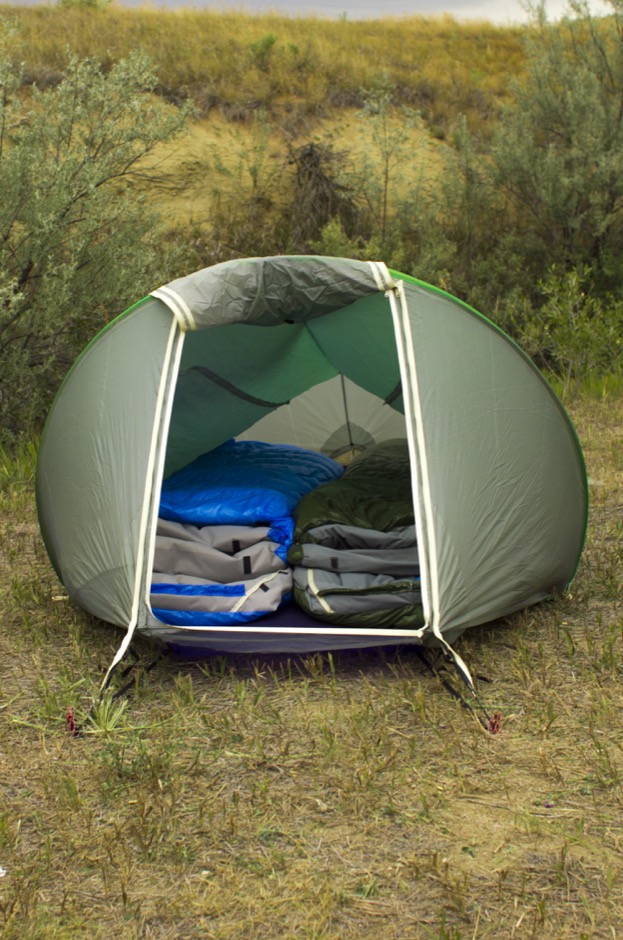

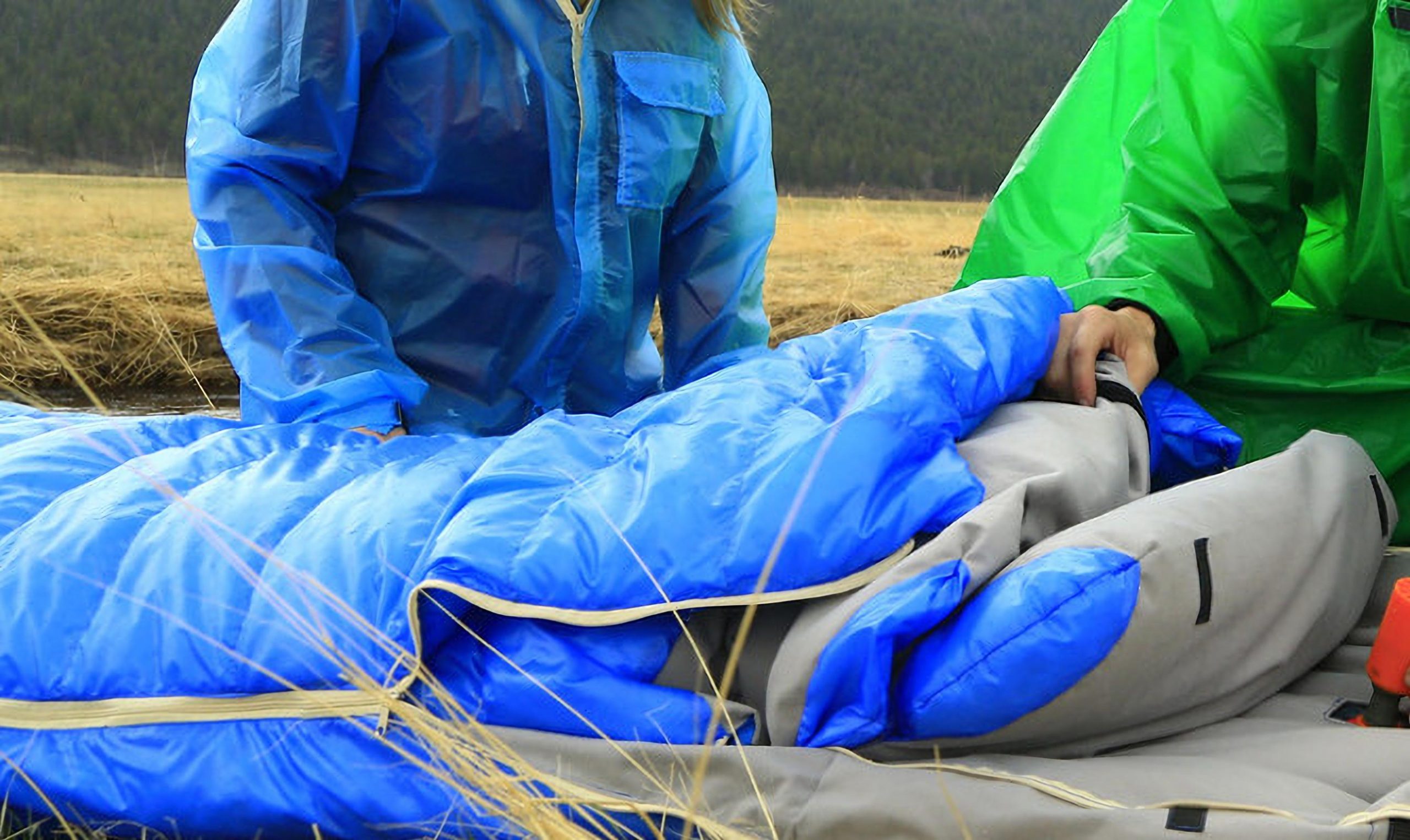










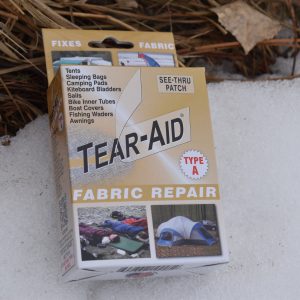
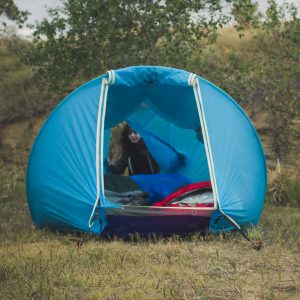

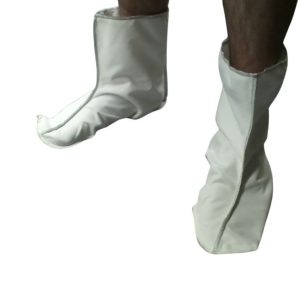
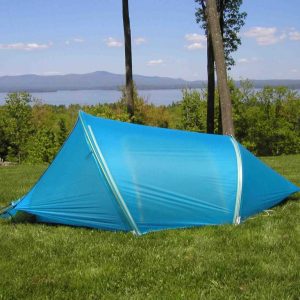
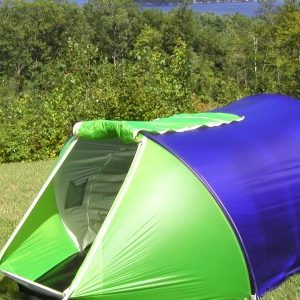
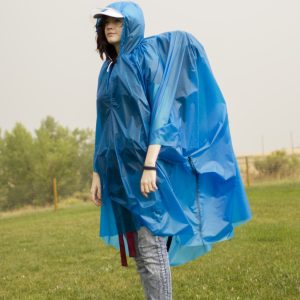
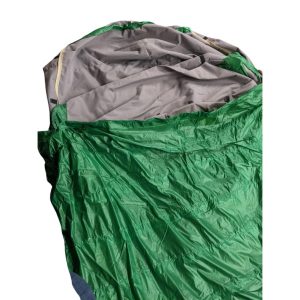
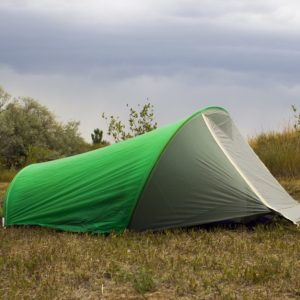
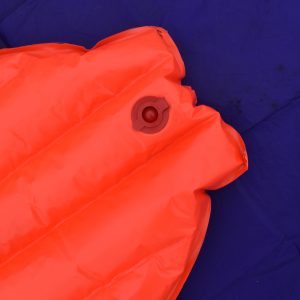
Reviews
There are no reviews yet.